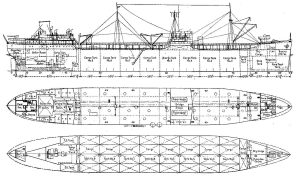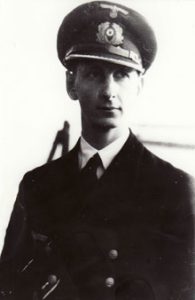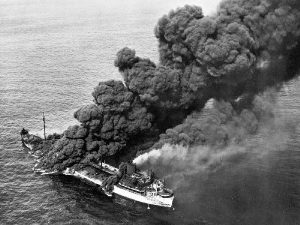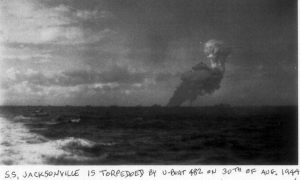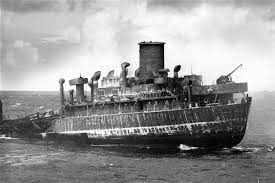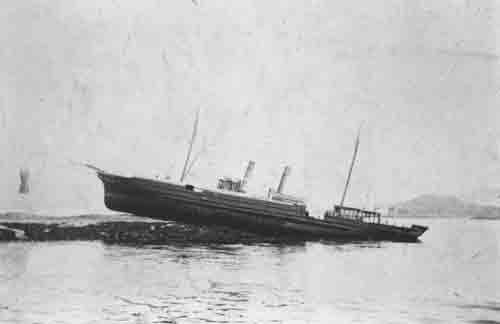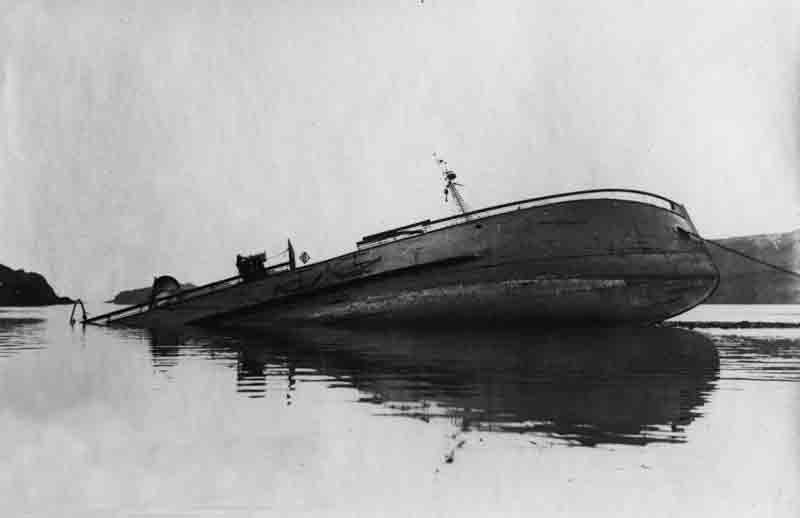The T2-SE-A1 class steel motor tanker Jacksonville was launched from the Swan Island yard of the Kaiser Corporation, Portland, Oregon (Yard No 45) on 23rd December 1943. She measured 504.0′ x 68.2′ x 39.2′ and her tonnage was 10488 gross tons, 6301 net tons. She was powered by a steam turbine driving a 6000 horse power diesel engine by General Electric Company, Lynn, Massachusetts.
Ordered by the Deconkil Shipping Company she was requisitioned by the US War Adminstration Agency to transport much needed fuel supplies to the Allied forces in Europe.
Her first Transatlantic voyage was part of convoy CU32 from New York departing on 18th July 1944 and arriving safely in Liverpool on 29th July. She returned to New York immediately, arriving back in the United States on 14th August. Within 5 days she was reloaded with 14300 tons of petrol and set sail once again for Shellhaven in Convoy CU36. The convoy consisted of thirty one merchant ships and six escorts. The Transatlantic element of the voyage went well but, on 30th August, they arrived in the North Channel where the German U-boat wolf packs lay in wait. One of these vessels was U-482.
The commander of U-482, Kapitanleutnant Graf von Matuschka, started his attack at 14:55 GMT. He fired two torpedoes at a group of five ships scored a direct hit on the last ship in the line, Jacksonville, which, within seconds, was a mass of flames as her highly combustable cargo caught fire. Within minutes she was ablaze from stem to stern with flames leaping 100 metres into the sky. The position of the initial explosion was reported as 55° 30’N, 007° 30’W. A few minutes later she was hit by a second torpedo which broke her in two and the two burning halves drifted apart. Forty nine crewmen and twenty nine armed guards aboard had no chance – only two men survived to be picked up by the destroyer USS Poole after 90 minutes in the water. Both sections of the doomed ship remained afloat for some time.
The stern section was sunk by escort vessels with depth charges and gunfire before they moved on with the convoy. A rescue tug appeared on the scene in the early hours of the following morning and tried to extinguish the flames on the forward section but this was futile and just after noon on the 31st this section disappeared beneath the waves.
The two pictures of the stern section are attributed to the US Coastguard archives, which we thank, and include for reference.
In the publication Underwater Handbook – Western Approaches to the British Isles, the Hydrographic Department describes a wreck in position 55° 44′ 18″N, 006° 48′ 00″W as the Jacksonville. This report appears to be based on a Royal Navy report that oil was seen leaking from the wreck and visible on the surface but recent surveys do not show a wreck in this vicinity. Another report, from Lloyds, also attributed to the Hyrdographic Department in 1968, indicates that a wreck at 55° 47′ 37″N, 006° 54′ 04″W could be the Jacksonville. However this site was investigated by divers in 1986 who found this obstruction to be a large flat topped rock formation rather than a wreck. To this date the wreck of the Jacksonville has not been located. We have used the Underwater Handbook position to mark this wreck on the search chart for the area, the position has not been confirmed.

